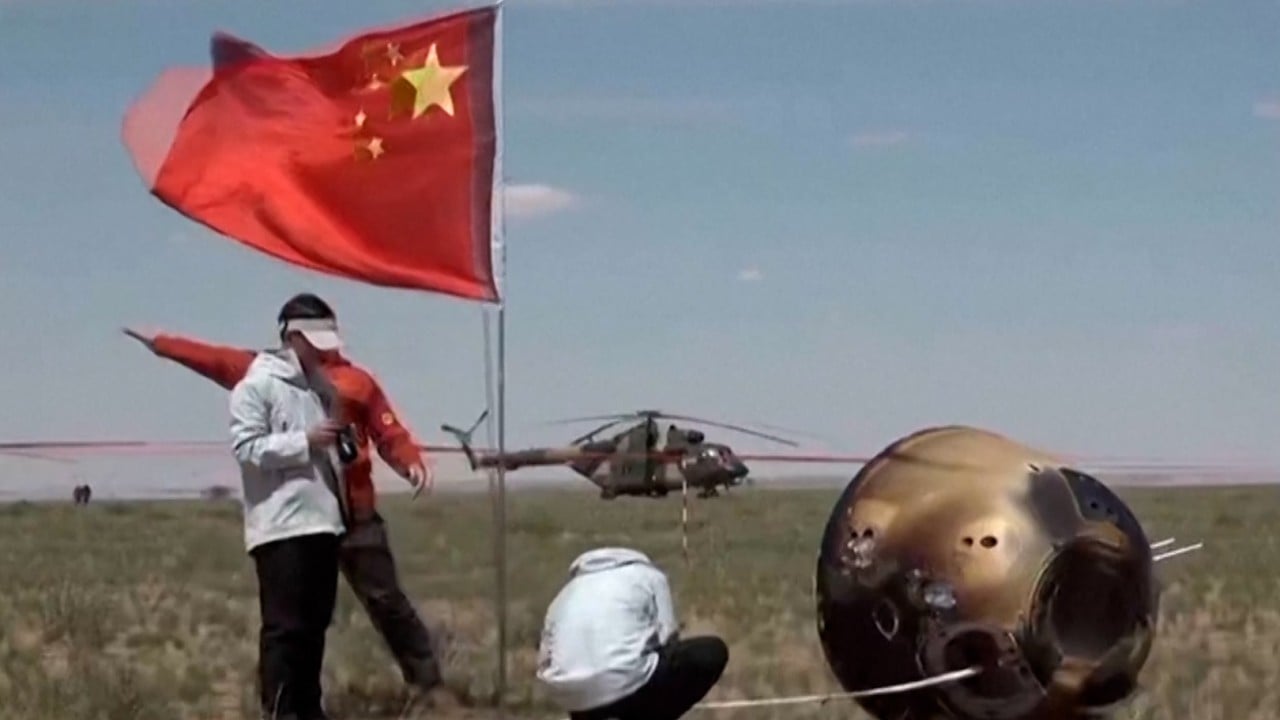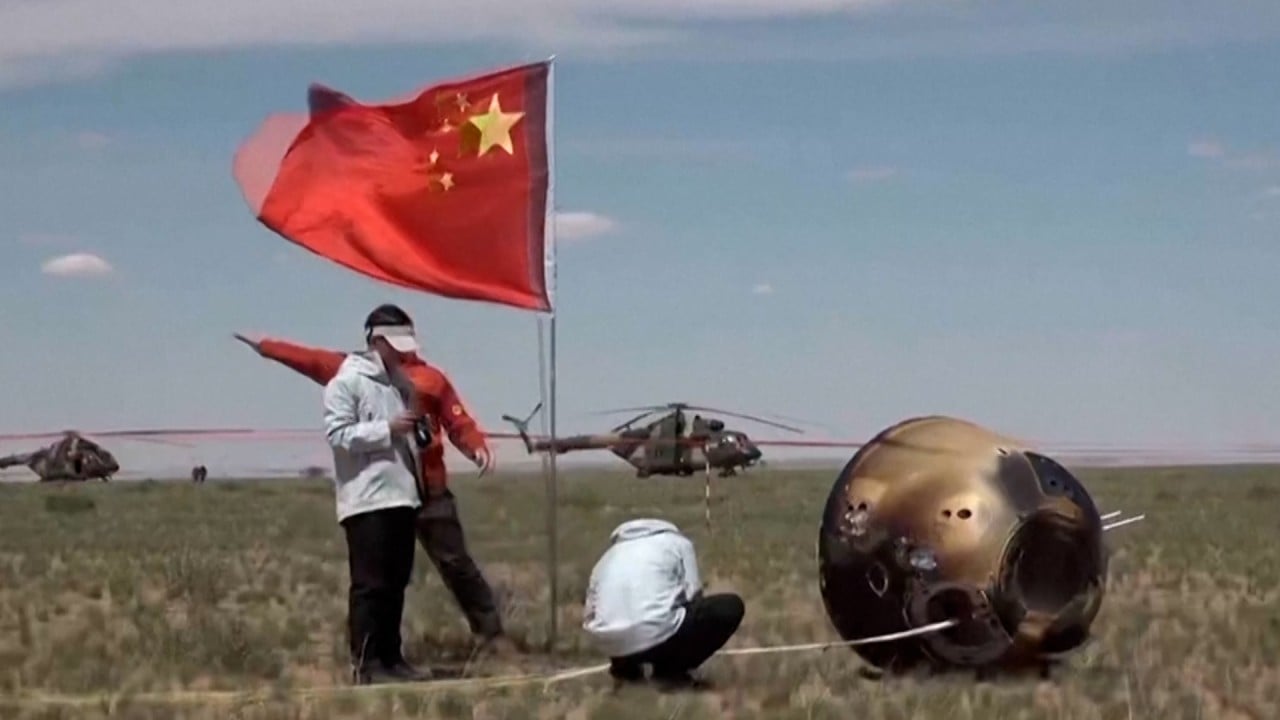China welcomes scientists from around the world to study lunar rock samples from the historic Chang’e-6 mission, but a space official said the United States should “remove obstacles” to cooperation between the two nations.
Scientists worldwide were encouraged “to jointly carry out scientific research on lunar samples and data”, Bian Zhigang, vice-administrator of the China National Space Administration (CNSA), said on Thursday.
Asked at a press conference in Beijing whether scientists from the US wanted to take part in that research, Bian said: “I believe they do.”
“[But] if the US really wants to have normal space exchanges with China, I think they should take practical measures to remove obstacles” that limit cooperation, he said.
“The root cause of the obstacles … lies in domestic laws such as the Wolf Amendment of the United States, which hinder Sino-US space cooperation.”

The Wolf Amendment, which was passed in 2011, prohibits the American space agency from using government funds to engage in direct space cooperation with China without explicit permission from Congress.
Bian said China had always been open to space cooperation and exchanges with the US.
He said China’s achievements in space were made possible by its own efforts and knowledge, and while the US law had stymied cooperation “it cannot hinder the rapid development of China’s space industry”.
The Chang’e-6 lunar probe successfully landed back on Earth on Tuesday after collecting rock samples from the moon’s far side – making China the first country to do so.
“The geological structure, material composition and early cosmic environment of the far side of the moon are full of mysteries,” Bian said.
Liu Yunfeng, head of international cooperation at the CNSA, said the space agency had set up an application process for international scientists who want to take part in the research.
“China welcomes scientific researchers from all countries to apply in accordance with the relevant procedures and share the benefits,” Liu said.
The Chang’e-6 mission was carried out in cooperation with Pakistan, France, Italy and the European Space Agency on four scientific payloads, including a microsatellite and radon gas detector.
“After the success of the mission, heads of multinational space agencies and international organisations, international peers and friends, sent us congratulations and look forward to deepening cooperation,” Bian said.
With just a year and a half to launch the Chang’e-6 mission, chief designer Hu Hao said it had been challenging to take into account different languages and working habits while planning the international payloads.
“It should be said that we have succeeded in dealing with these challenges,” Hu told reporters.
Bian said the Chang’e-7 and Chang’e-8 missions were next, with the aim of surveying resources on the south pole of the moon.
Six international payloads have already been selected for Chang’e-7, while 200kg of payload has been set aside for the Chang’e 8 mission, with 30 applications for cooperation already received, according to Liu.
China is also planning to build an international lunar research base, and Liu said the CNSA had signed cooperation agreements for the project with more than 10 countries so far.
“We look forward to working with more international peers to make new contributions to expanding human cognition, enhancing human well-being, and promoting the building of a community with a shared future for mankind in the field of outer space,” Bian said.



